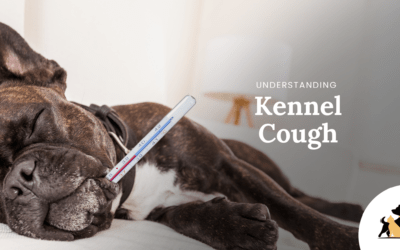
by Hannah@briarcliffpartners.com | Apr 5, 2025 | Blog, Canton, MA, Champlin, MN, Charlton, MA, Crestwood, MO, Gurnee, IL, Medicine, Myrtle Beach, SC, Naperville, IL, News, Orland Park, IL, Path to Partnership, Saint Paul, MN, Sarasota, FL, Schaumburg, IL
Hometown Veterinary Partners is proud to announce the addition of Dr. Cheryl Brocki as our new Chief Veterinary Officer (CVO). With an extensive background in veterinary operations, mentorship, and clinical excellence, Dr. Cheryl Brocki joins our executive leadership team at an exciting time in our growth. She will play a key role in shaping the future of our veterinary hospitals while upholding our unwavering commitment to supporting veterinary teams and providing compassionate patient care.
As CVO, Dr. Cheryl Brocki will oversee the operational aspects of our veterinary hospitals, ensuring smooth and efficient daily functions while fostering a culture of collaboration and growth. Her responsibilities include promoting medical excellence, enhancing our onboarding program for new DVM graduates, and supporting DVM recruiting efforts. Additionally, she will support new veterinary hospital partner locations and focus on developing Partner DVMs to strengthen their leadership, care standards, and business acumen.
Dr. Cheryl Brocki brings a wealth of experience to Hometown Veterinary Partners. She has successfully mentored numerous early-career veterinarians, certified veterinary technicians (CVTs), and veterinary assistants (VAs). In her previous leadership role, she prioritized DVM engagement and retention efforts for a network of over 75 veterinarians. She also played a key role in building a veterinary university program, expanding it to 16 universities with 22 student ambassadors. Furthermore, Dr. Cheryl Brocki developed and implemented a comprehensive onboarding program for new graduate veterinarians, ensuring they received the support and guidance needed for a successful career. Her work in furthering veterinary medicine has extended to forging strong partnerships in the vetmed community, and she has also earned a certificate of completion from the BlendVet DEIB program in March 2023.
Hometown Veterinary Partners Founder and President Keri Kamba expressed her excitement about Dr. Cheryl Brocki joining the team, “We are thrilled for Dr. Brocki to join our leadership team in our rapidly growing organization. Dr. Brocki embodies encouragement and empowerment for our veterinary professionals in each of our locations, and we are excited for her to continue our compassionate care programs for pets and our communities.”
At Hometown Veterinary Partners, we are more than just a network of veterinary hospitals—we are a passionate team dedicated to empowering veterinarians to provide the highest level of care. Founded by individuals who left corporate veterinary practices behind, our organization is driven by a commitment to fostering a culture of empowerment, support, and medical excellence.
We look forward to the expertise, leadership, and compassion she brings to the Hometown Veterinary Partners team!
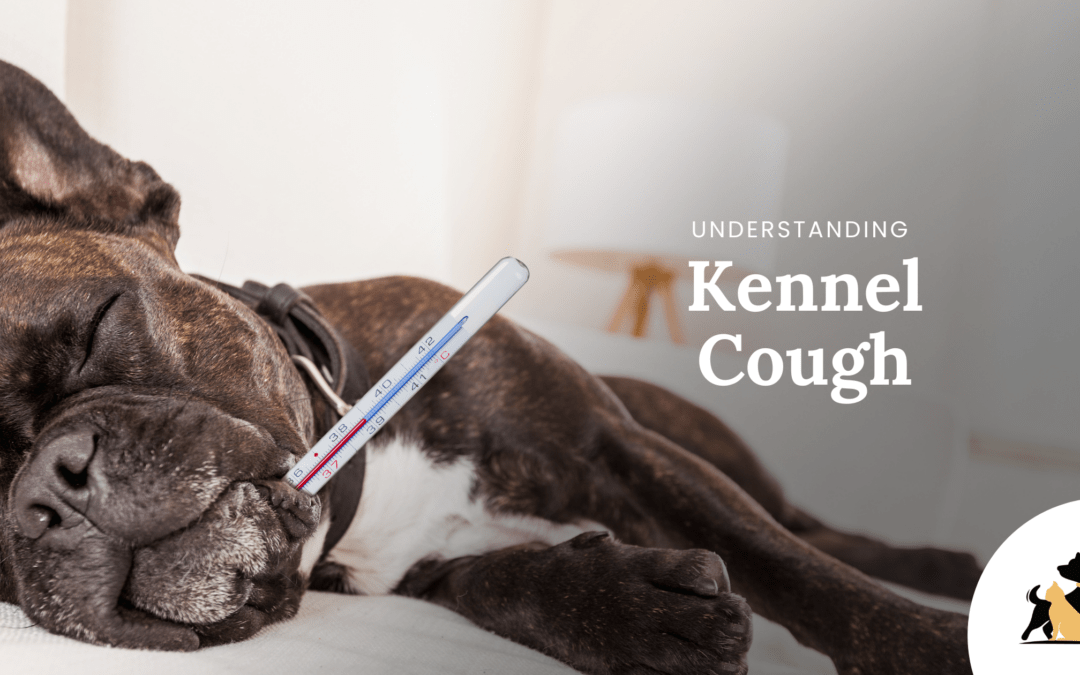
by Danielle Schermerhorn | Oct 30, 2024 | Blog, Medicine
What is Kennel Cough?
Kennel cough, also known as infectious tracheobronchitis, is a highly contagious respiratory disease in dogs characterized by a persistent cough. The term “tracheobronchitis” refers to the inflammation of the trachea (windpipe) and the bronchial tubes. The disease is caused by a variety of viruses and bacteria, including adenovirus type-2, parainfluenza virus, canine coronavirus, and Bordetella bronchiseptica. The name “kennel cough” originates from the frequent outbreaks in places where dogs are housed together, such as kennels, making the infection easily transmissible.
Clinical Signs of Kennel Cough
The clinical signs of kennel cough can vary but typically include a loud, persistent cough often described as a ‘goose honk’. Other symptoms may include runny eyes and nose, swollen tonsils, wheezing, loss of appetite, and lethargy. Dogs with this condition often cough when their throat is rubbed or after exercise.
How Dogs Contract Kennel Cough
Kennel cough is highly contagious and spreads through casual contact between dogs, such as sniffing, playing, or sharing water bowls. Factors that increase the likelihood of contracting the infection include stress, cold temperatures, exposure to dust or smoke, and crowded living conditions.
Treatment for Kennel Cough
Treatment for kennel cough largely depends on the severity and the specific pathogens involved. Viral infections typically do not have specific treatments, but antibiotics like doxycycline and amoxicillin can help manage bacterial infections caused by Bordetella bronchiseptica. In some cases, prolonged treatment may be necessary, but most infections resolve within one to three weeks. Cough suppressants and anti-inflammatory medications can also provide relief.
Preventing Kennel Cough
Vaccination is a key preventive measure against kennel cough. Most standard vaccination programs include vaccines for adenovirus and parainfluenza. The Bordetella vaccine is especially recommended for dogs that frequently interact with other dogs, such as those that are boarded, groomed, or visit dog parks. The Bordetella vaccine can be administered via injection, orally, or as nose drops, with the latter providing more rapid local immunity.
Effectiveness of Kennel Cough Vaccines
The immunity provided by vaccines, or even natural infection, is neither complete nor long-lasting. Therefore, it is crucial to consult a veterinarian for specific vaccination recommendations. Some kennel facilities may require booster vaccinations before boarding, and veterinarians may recommend booster shots every six months to maintain optimal protection.
Additional Considerations
In addition to vaccinations, good hygiene practices and reducing stress can help prevent kennel cough. Avoid exposing your dog to known risk factors such as crowded places and environments with poor air quality. Regular check-ups with your veterinarian can also ensure that your dog remains healthy and up-to-date on vaccinations.
Conclusion
Kennel cough is a common but preventable disease. Understanding its causes, recognizing the symptoms, and taking appropriate preventive measures can help keep your dog healthy and happy. Always consult with your veterinarian for the best practices in protecting your dog from this infectious disease.
Additional Sources
For more information on kennel cough and other canine respiratory diseases, you can visit:
- American Kennel Club
- Centers for Disease Control and Prevention
- Veterinary Partner
- PetMD
By staying informed and proactive, you can help ensure your dog’s well-being and reduce the risk of kennel cough in your community.
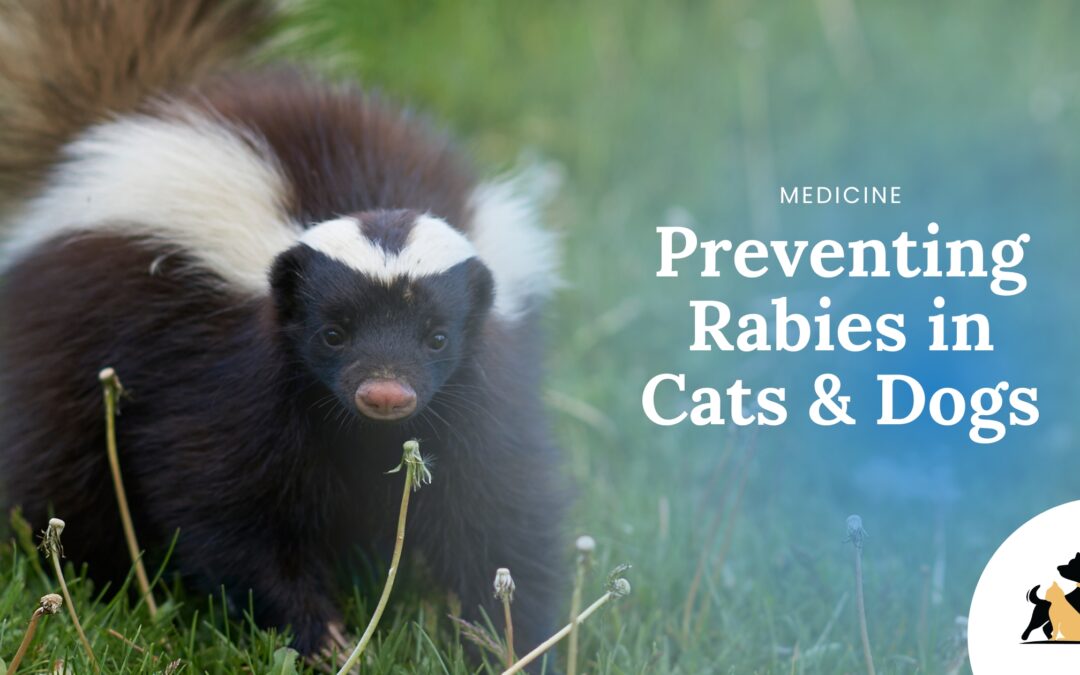
by Danielle Schermerhorn | Sep 18, 2024 | Blog, Medicine, Minnesota, Safety
Rabies is a deadly viral disease that targets the nervous system of mammals, including pets like dogs and cats, as well as humans. Once symptoms develop, rabies is almost always fatal, making it a critical public health concern that has persisted for thousands of years.
In July 2024, the Minnesota Board of Animal Health reported 32 rabies cases across the state, marking a sharp rise from the 20 cases recorded during the same period last year. This increase, primarily driven by rabid skunks, has been most pronounced in southwest and central Minnesota.
“This is a significant increase compared to other years,” said Minnesota Department of Health epidemiologist Carrie Klumb. “This is not a normal year.”
What is Rabies?
Rabies is caused by a virus from the Lyssavirus genus. The virus affects the central nervous system, leading to severe neurological symptoms and, eventually, death. It is present in many parts of the world, with the notable exceptions of Australia, Antarctica, and several island nations that have maintained strict quarantine measures to remain rabies-free.
Transmission of Rabies
The rabies virus is primarily transmitted through the saliva of an infected animal via bites. It can also be transmitted through scratches or open wounds exposed to the saliva of an infected animal. In North America, common sources of rabies include skunks, raccoons, foxes, and bats.
Incubation Period
The incubation period for rabies, which is the time between exposure to the virus and the appearance of symptoms, can vary widely. In dogs, this period typically ranges from two weeks to four months, but it can extend up to a year or more. In cats, the incubation period is generally shorter, from three to eight weeks. The length of the incubation period depends on factors such as the location and severity of the bite and the amount of virus introduced.
Clinical Signs of Rabies
Rabies progresses through several stages, starting with the prodromal phase, which involves behavioral changes. Quiet animals may become agitated, while active pets might become nervous or shy.
- Furious Rabies: This phase is characterized by extreme aggression, excitability, and the tendency to bite or chew objects. Dogs may exhibit pica (eating non-food items), and cats may show excessive drooling and muscle spasms that prevent swallowing.
- Dumb Rabies: More common in dogs, this form involves progressive paralysis starting in the limbs and moving to the facial muscles, leading to difficulty swallowing and a comatose state before death.
- Paralytic Stage: In cats, the third stage involves paralysis, leading to coma and death within ten days of symptom onset.
Diagnosis and Treatment
Rabies can only be definitively diagnosed post-mortem through the examination of brain tissue. There is no treatment for animals once symptoms have appeared. Therefore, prevention through vaccination is crucial.
Vaccination and Prevention
Vaccination is the most effective method of preventing rabies. Some cities and states have rabies vaccination requirements for dogs and cats, regardless if they roam outdoors or stay indoors. Vaccination typically begins at three to four months of age, with booster shots administered according to veterinary guidelines.
Human Exposure and Prevention
Rabies is zoonotic, meaning it can be transmitted from animals to humans. If you are bitten by an unvaccinated animal, immediate medical attention is essential. Washing the wound thoroughly and seeking prompt medical advice can prevent the virus from taking hold. For those exposed to rabies, a series of post-exposure vaccinations can prevent the onset of symptoms.
Resources for Further Information
For more information on rabies in dogs and cats, and how to protect your pets and yourself, consider the following resources:
- Centers for Disease Control and Prevention (CDC) – Rabies
- World Health Organization (WHO) – Rabies
- American Veterinary Medical Association (AVMA) – Rabies
- RabiesAware.org
By staying informed and ensuring your pets are vaccinated, you can significantly reduce the risk of rabies and contribute to public health safety.
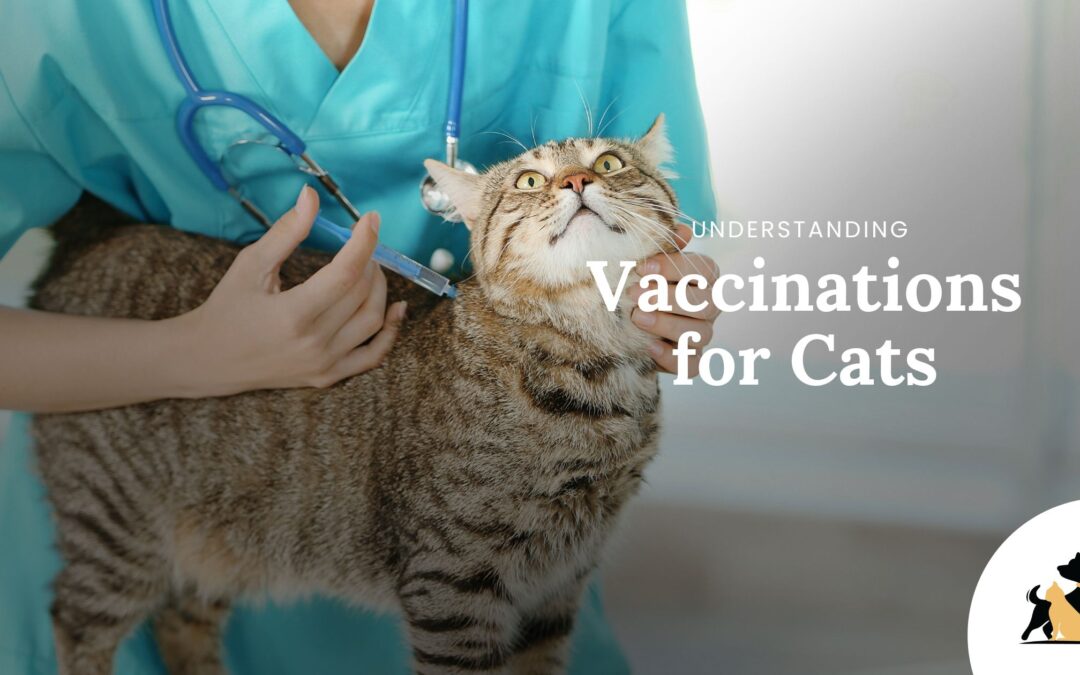
by Danielle Schermerhorn | Aug 28, 2024 | Blog, Medicine
Vaccinating your cat is a critical aspect of responsible pet ownership, ensuring your feline friend stays healthy and protected against various infectious diseases. Here, we will discuss the considerations of vaccinating cats, including the types of vaccines, vaccination schedules, potential risks, and the diseases they protect against.
Understanding the Types of Vaccines
Vaccines stimulate the immune system to recognize and combat specific microorganisms such as viruses or bacteria. Here are the three main types of vaccines used in cats:
- Modified Live Vaccines: These contain weakened or genetically modified organisms that do not cause disease but replicate in the cat’s body, providing strong, long-lasting immunity. They are not recommended for pregnant cats or those with compromised immune systems.
- Killed (Inactivated) Vaccines: These use organisms that have been killed. They often contain an adjuvant to enhance the immune response. While safer for cats with immune system issues, they may not offer as robust protection as live vaccines.
- Subunit Vaccines: These are also known as recombinant-DNA vaccines. They include only specific parts of the microorganism, making them safer but requiring more frequent administration.
Core and Non-Core Vaccines
Core vaccines are recommended for all cats, while non-core vaccines are given based on the cat’s lifestyle and risk of exposure to certain diseases.
Core Vaccines:
- Feline Panleukopenia Virus: Protects against a highly contagious and often fatal disease causing severe gastroenteritis.
- Feline Viral Rhinotracheitis (FHV-1): Protects against a herpes virus causing respiratory infections.
- Feline Caliciviruses (FCV): Protects against a virus causing respiratory infections and oral disease.
- Rabies Virus: Essential for preventing a fatal disease that affects the nervous system and can spread to humans.
Non-Core Vaccines (administered based on risk):
- Chlamydophila felis: Protects against bacterial infection causing conjunctivitis and respiratory issues.
- Bordetella bronchiseptica: Protects against respiratory infections.
- Feline Leukemia Virus (FeLV): Recommended for kittens and adult cats with outdoor access.
Vaccination Schedule
Kittens: Initial vaccinations are usually given between 6-8 weeks of age, with boosters every 3-4 weeks until they are 16-20 weeks old. Kittens are not fully protected until 7-10 days after the last booster.
Adult Cats: Generally, a booster is given a year after the initial series, then every 1-3 years depending on the cat’s lifestyle and health status. Low-risk adult cats may only need core vaccines every three years.
Potential Risks of Vaccination
While the benefits of vaccination far outweigh the risks, there are a few potential side effects:
- Mild reactions such as temporary loss of appetite or lethargy.
- Rare allergic reactions that may include difficulty breathing, vomiting, or diarrhea.
- Very rarely, cats may develop injection-site sarcomas, a type of soft tissue cancer.
Diseases Prevented by Vaccination
Vaccinations protect against several critical diseases:
- Feline Panleukopenia (FPV): Causes severe gastroenteritis.
- Feline Upper Respiratory Infections (FHV-1 and FCV): Cause respiratory and ocular issues.
- Feline Chlamydiosis: Causes conjunctivitis and respiratory infections.
- Feline Leukemia Virus (FeLV): Leads to immune suppression and cancer.
- Rabies: A fatal disease affecting the nervous system, transmissible to humans.
- Bordetella: Causes respiratory infections.
Conclusion
Vaccinating your cat is essential for preventing serious diseases and ensuring a long, healthy life. Discuss with your veterinarian to determine the best vaccination plan based on your cat’s health, lifestyle, and risk factors.
Additional Sources
American Association of Feline Practitioners (AAFP) Vaccination Guidelines
LifeLearn Inc. © 2022, Vaccines for Cats(Vaccines for Cats (1))

by Danielle Schermerhorn | Aug 26, 2024 | Blog, Medicine
As pet parents, we want nothing more than to see our furry friends happy, healthy, and full of life. However, just like humans, pets can experience pain, and often, they suffer in silence. Because they can’t tell us when something hurts, it’s our responsibility to recognize the signs and take action to ensure their comfort and well-being. September is Animal Pain Awareness Month, a time to raise awareness about the importance of understanding and managing pain in pets. This guide will walk you through five essential steps to help your pet live a pain-free life, highlighting why early detection and proactive care are crucial. By learning how to spot the signs of discomfort and knowing what steps to take, you can make a significant difference in your pet’s quality of life.
1. Keep an Eye on Behavior
Behavioral changes are often the most noticeable signs that your pet may be experiencing pain or discomfort. These changes can be subtle, like decreased activity or appetite, or more pronounced, such as limping, whining, or unusual aggression. By paying close attention to your pet’s daily habits, you’ll be better equipped to identify any shifts that could indicate an underlying issue. Early detection can make a significant difference in managing pain effectively.
2. Use Caution When Your Pet is in Pain
Even the most loving and gentle pets can become defensive or aggressive when they’re in pain. It’s essential to approach them with care to avoid causing them further discomfort or distress. Gently observe their reactions to being touched in different areas of their body, and if they show signs of discomfort, such as pulling away, growling, or snapping, it’s a clear indication that something might be wrong. Remember, this behavior is not a reflection of their personality but a response to pain.
3. Pill Popping Isn’t the Only Solution
While medication is a common and often necessary component of pain management, there are several alternative treatments that can complement or, in some cases, replace traditional painkillers. Acupuncture, laser therapy, physical therapy, and weight management are just a few options that can help alleviate your pet’s pain without relying solely on medication. These therapies can be particularly beneficial for chronic conditions like arthritis, where long-term medication use might not be ideal. Always discuss these options with your veterinarian to find the best approach for your pet.
4. Your Vet Can Always Check for Pain
Regular veterinary visits are crucial in maintaining your pet’s overall health, and during these visits, your vet will routinely check for signs of pain or discomfort. Vets are trained to detect even the most subtle indicators of pain, which might go unnoticed at home. Whether it’s through physical examination, blood tests, or imaging, your vet can identify potential issues early on, allowing for prompt and effective treatment.
5. There Are Some Easy Ways to Minimize Pain
As a responsible pet parent, you can take several steps to minimize your pet’s risk of pain and discomfort. Regular dental care, a balanced diet, and proper exercise are foundational aspects of your pet’s well-being. Dental issues, in particular, are a common source of pain that can be easily prevented with regular brushing and veterinary cleanings. Similarly, maintaining a healthy weight through proper nutrition and exercise can prevent a host of conditions, including joint pain and diabetes, that can lead to chronic pain. By proactively managing these aspects of your pet’s care, you can help them live a longer, pain-free life.
Why Animal Pain Awareness Month is Important
1. It Reminds Us to Look Out for Subtle Changes in Our Pets’ Behavior
Pets can’t tell us when they’re hurting, so it’s up to us to be vigilant and aware of any changes in their behavior. This awareness is the first step in recognizing and addressing pain early, which can make all the difference in your pet’s quality of life.
2. Proper Pain Management Now Helps Reduce Risks Later
Addressing pain promptly can prevent more serious health issues down the road. Chronic pain, if left unmanaged, can lead to other complications, such as reduced mobility, depression, and even systemic illnesses. Early and effective pain management not only improves your pet’s current comfort but also protects their long-term health.
3. It Highlights the Need for Having a Great Veterinarian
Establishing a strong relationship with a trusted veterinarian is crucial. Regular check-ups ensure that any signs of pain are caught early, and having a go-to vet means that when something does arise, you’re not scrambling to find someone who can help. A great vet will work with you to develop a comprehensive pain management plan tailored to your pet’s needs, ensuring they get the best possible care.
If you believe your pet is experiencing pain, schedule an appointment with a veterinarian at a Hometown Veterinary Partners hospital near you.
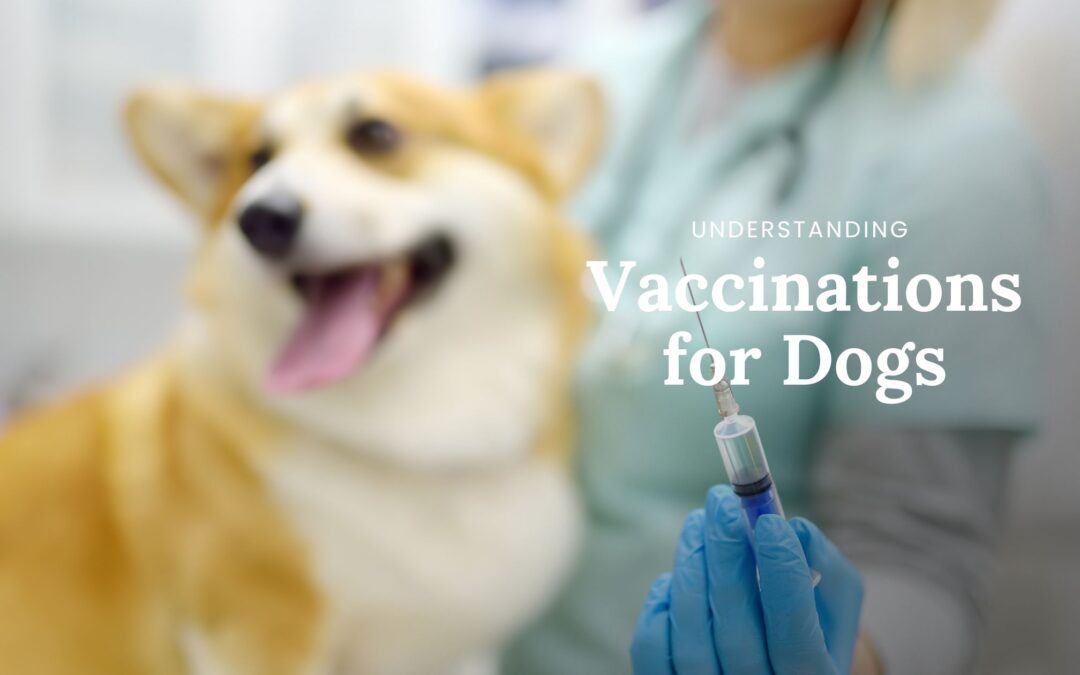
by Danielle Schermerhorn | Jul 17, 2024 | Blog, Medicine
Vaccinating dogs is a crucial aspect of responsible pet ownership, ensuring the health of individual dogs and the well-being of the broader canine community. With recent advancements in veterinary medical science, vaccines have become more effective and safer. However, deciding on the appropriate vaccinations for your dog involves several considerations. Here’s a comprehensive look at what you need to know about vaccinating your furry friend.
Understanding Vaccines
A vaccine is a preparation of killed or altered microorganisms administered to stimulate the immune system. This preparation helps the body recognize and fight the microorganism, preparing it for future encounters. Depending on the disease, vaccines can either prevent infection entirely or reduce the severity of the illness, promoting quicker recovery.
How Vaccines Work
Vaccines mimic an infection, enabling the immune system to build a defense against the microorganism without causing the disease. Once vaccinated, the immune system is primed to respond more efficiently to future infections. However, it’s important to note that while vaccines can prevent illness, they do not stop microorganisms from entering the body. This means vaccinated dogs might still carry and potentially spread pathogens without showing symptoms.
Types of Vaccines
There are two primary types of vaccines used in dogs:
- Modified Live (Attenuated) Vaccines contain live microorganisms that have been weakened or altered to not cause disease but stimulate an immune response.
- Killed (Inactivated) Vaccines contain microorganisms that have been killed or inactivated. Killed vaccines often require an adjuvant to enhance the immune response.
Core vs. Non-Core Vaccines
Vaccines for dogs are categorized as core and non-core:
- Core Vaccines: Recommended for all dogs due to the severity and widespread nature of the diseases they prevent. These include:
- Canine adenovirus-2 (hepatitis)
- Non-Core Vaccines: Given based on the dog’s environment, lifestyle, and specific risk factors. These include vaccines for:
- Canine parainfluenza virus
- Bordetella bronchiseptica (kennel cough)
Vaccination Schedules
Puppies receive maternal antibodies from their mothers, providing temporary immunity. However, this passive immunity wanes over time, necessitating multiple doses of certain vaccines to ensure effective protection. Typically, puppies require vaccinations starting at six to eight weeks of age, followed by booster shots at regular intervals.
Revaccination and Booster Shots
Most properly vaccinated dogs maintain immunity for over a year, but the level of immunity decreases over time. To ensure ongoing protection, revaccinations are necessary. Core vaccines generally require boosters every three years, while non-core vaccines may need annual boosters depending on the dog’s risk factors.
Considerations for Vaccinating Your Dog
- Health Status: Dogs should be healthy when vaccinated to ensure proper immune response. Vaccinating a sick dog can lead to inadequate protection or adverse reactions.
- Size of the Dog: Vaccination doses are standardized for all dogs, regardless of size. Studies have shown this approach is safe and effective for dogs of all sizes.
- Potential Side Effects: Most dogs experience mild reactions, such as lethargy or soreness, post-vaccination. Severe reactions are rare but can include allergic responses like hives, vomiting, or difficulty breathing. If such reactions occur, immediate veterinary consultation is essential.
- Complete Protection: While vaccines significantly reduce the risk of disease, they do not guarantee 100% protection. Factors like maternal antibodies, incomplete immune response, and new strains of pathogens can affect vaccine efficacy.
Final Thoughts
Vaccinating your dog is vital to maintaining their health and preventing the spread of infectious diseases. Consult your veterinarian at a Hometown Veterinary Partners location nearest you to develop a tailored vaccination plan based on your dog’s needs and lifestyle. Staying informed and proactive about vaccinations ensures your dog leads a healthy, happy life.
Additional Resources
For more detailed information on specific vaccines and the diseases they prevent, refer to the following sources:
- American Animal Hospital Association (AAHA) Canine Vaccination Guidelines
- Centers for Disease Control and Prevention (CDC) – Pet Vaccination
- World Small Animal Veterinary Association (WSAVA) – Vaccination Guidelines




